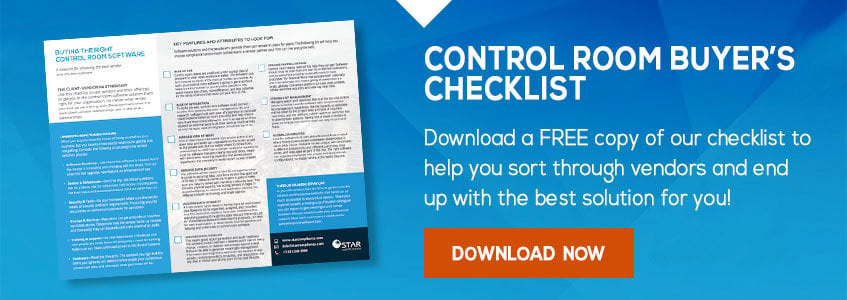Control Room Software: Why One Big Firm Suddenly Sees It As Essential
Automation has come to the deal-conflicts software space, as it has already come to the employee conflicts software space. And not a moment too soon for one control room chief
“There’s a growing awareness in the financial services industry about the need for a control room function as part of the larger compliance function. This awareness is being driven by increased regulation as well as increased complexity in the day-to-day operations of the institutions themselves.” So says Talia,* Head Of The Compliance Control Room at one of Africa’s leading banks. Talia is currently leading the implementation of a brand new control room product there, for which StarCompliance is the vendor.
Control rooms are nothing new, but the way in which they can be managed is. Control rooms are part and parcel of any financial institution that has a private side and public side. The private side is where deals are done: mergers and acquisitions, equity offerings, debt offerings, etc. The deals are very complex, and generate a deluge of data that must be rigorously monitored.
It’s up to control rooms to do this monitoring. Control rooms act as a firm’s nerve center: the nexus through which all deal related activity must pass to be organized, analyzed, and recorded. But the volume of this deal data is immense, and keeping track of who’s involved in what and who said what to whom can be overwhelming—with little room for error and a premium placed on clearing deals quickly. Yet for how much work they do, and how much pressure they operate under on a daily basis, control room teams are small: maybe just five or six people, directing some of the bank’s most important traffic.
These teams used to have to monitor this data deluge manually, at best relying on combinations of spreadsheets and email chains to ensure conflicts are kept in check. Control room software is changing that. “Control rooms are intense environments,” says Talia. “The work is fast-paced and there’s a lot to keep track of. Software can automate much of what previously could only be done manually, but it also keeps data organized and up to date. In this job, data can’t go stale.”
These already intense environments are just getting more intense, especially for the bigger firms, which may offer a complex variety of financial services. But complexity can mean chaos. And chaos can mean lost deals, if they aren’t cleared quickly enough, and reputational damage, if conflicts result in regulatory action. Again, Talia: “Control room is a compliance function, the purpose of which is to manage the flow of sensitive corporate information in a multi-service financial institution. The more services you offer, the greater chance for conflicts and the more the need for a control room. You need to manage the flow of information in every respect.”
And it’s not just complexity that’s driving the need for a well-oiled control room, it’s also regulation. In many places around the world, Twin Peaks is now officially up and running. Twin Peaks is the trending regulatory model globally. It denotes a system with two primary regulators: a prudential conduct authority and a market conduct authority, with special emphasis placed on preventing market abuse and maintaining market integrity.
“Compliance has traditionally been more about anti-money laundering, terrorist financing, and consumer protection,” says Talia. “The increased focus on market conduct means banks and other financial firms need to beef up their controls around it. Control rooms fit squarely into this increased regulatory focus. And while Twin Peaks may have accelerated the trend somewhat, things were already heading in this direction, especially for the bigger firms.”
And because big firms can operate across borders, compliance leadership needs to consider not just domestic regulation but also foreign. Talia: “The more international business an institution has, the more exposed it’s to external regulation, especially if it has interests in the EU, where you’re seeing control room type legislation at its most mature. Where in the past it’s been left to the banks to figure out how to navigate this world, it’s going to become a lot more proscribed. And domestic regulators will look to international regulation as a guide.”
Reputational risk is also always a concern for firms. For Talia, this gets at the perception of her bank beyond just the business community. “You also have to think about managing how the firm is perceived overall. How does the person on the street view the activities we’re involved in? We consider this kind of risk from a control room perspective, as well.”
“Understanding the information we have in the bank is key to managing it, and you can’t do that from spreadsheets anymore. Capturing MNPI, no matter where it originates from, is critical. Data needs to be stored in a safe place. You need proper record keeping and audit trails. You need good report generation. The software has to be easy for front line people to use and tech teams to integrate with. This what we looked for in a control room product. The must haves.”
* Talia’s real name has been withheld at her request.




